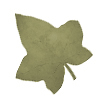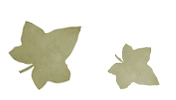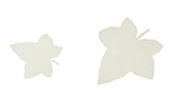


|
Some people can skip off into a fantastical dream-world at the drop of a hat, or picture a place they visited 10 years ago as if it was only yesterday, for other people visualising something as recent as what they ate for breakfast can be an uphill struggle.... but with a little practice and patience anyone can hone their visualising skills. I
would say that without a doubt the group of people
who are likely to find visualisation easier than
others would be those of a creative / artistic ilk
- and of course children. I would also hazard a
guess that left-handed people find it easier than
right-handed people. I don't just mean those who
write with their left-hand, just anyone who is left-hand
orientated [opening doors, brushing your teeth etc
- the arm you use the most]. Left-hand orientated
people tend to be controlled more by the the right
side of their brain - this is the creative, visual,
imagining side, as opposed to the left side of the
brain which is more analytical, logical and verbal.
The right brain also specialises in memory and recognition
of objects, places and music, whereas the left brain
specialises in memory and recognition of words or
numbers. [This is of course a rather simplified
look at a very fascinating and complex topic]. Exercises to help build your visualisation skills : • Concentrate on one object [a flower for instance] - observe it, describe it out loud, be aware of how it feels, how it smells. Drink in the detail, close your eyes and try to see it in your mind’s eye. You may like to keep a journal in which you can sketch and make observations of objects you come across. • Picture a journey you make frequently - you may be surprised at just how much detail you can remember, but don’t be disheartened if you can’t remember much detail at first. The next time you make your journey be sure to take in as much information as you can, then write a detailed description of your journey. Read over your description a few times, and then close your eyes, relax and build up the journey in your mind’s eye. • Visualise a room that you frequent often - it could be your bedroom, kitchen, living room [or even your garden] - observe the room, drink in the details, and then close your eyes and build up the room around you. Then move to another room and visualise the previous location. • Daydream your way to an imagined location : Decide on an initial setting [edge of a field; a tree on a hill; on a beach etc..], then find somewhere comfortable to sit, ensure that you won’t be disturbed, and work on building up this setting in your mind’s eye, adding more detail as you go along.... we often do this when we're engrossed in a particularly good story / book. Exercises to try with a partner : • Describe an object - pick an object you feel particularly drawn to and take a few minutes to take in the details - the shape, the feel, the colour, the smell, is it hot or cold? dry or wet? Drink in the detail and try and hold it in your mind's eye. Then give the object to your partner and sit facing the other direction [so you can no longer see the object]. Now describe the object to your partner in as much detail as possible. Your partner can prompt you with questions if you run out of steam too early. • "Photographic Memory" - Get a collection of photos, postcards or pictures together and choose one to start with. Now describe to your partner the image - absorbing as much information as you can. When you have finished, hand the picture to your partner and proceed to describe the picture - recalling as much information as you can. [Again, your partner can prompt you with questions if necessary]. • "Object Tray Game" - we used to play
this one a lot at school - the teacher would place
a number of different objects on a tray, which would
be covered over with a tea-towel. Once the tray
was uncovered we would have 1 minute to try and
take in as much information as possible before the
tea-towel was placed back over the tray. We then
had to write down everything we could remember.
When we were finished writing our lists the tea-towel
wool be removed and we could see how much we'd remembered. Keep
a visualisation journal so you can keep track of
your progress - and don't be disheartened if you
find yourself struggling at first - perserverance
and patience is needed whatever skill we're learning
/ improving. If you find you struggle to keep focus
when you're trying a particular visualisation you
might like to get a partner to read something out
loud, or if you prefer to work alone record yourself
and play it back - remember not to speak too fast
so you can allow time to build up scenes and situations. Related Articles [Visualisations] : The Tree on the Hill - Taking a Walk - a guided visualisation by Gillie Whitewolf . Read The Wood beside the Lake - Animal Guide Visualisation - A visualisation by Gillie Whitewolf guiding you through a lake to a wood where you will meet one of your animal guides. Read |
|

Gaia's Garden Library
Non Fiction Section : Gaia's Garden Herblore | Susun S. Weed Articles | Articles and Musings
Fiction Section : Short Stories & Prose| As Told
By Cat | Public Domain Texts| Poetry
Shop | Library | Gallery | Forum | Contact | Links








